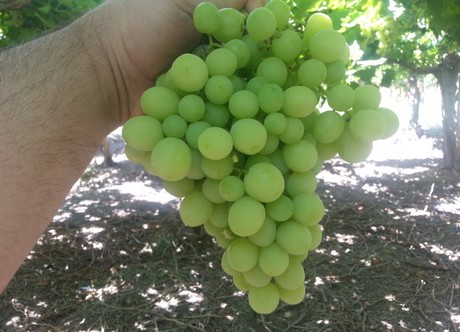 opportune rains caused complications for table grape growers throughout South America. Those complications led to a fall in production in several countries throughout the continent.
opportune rains caused complications for table grape growers throughout South America. Those complications led to a fall in production in several countries throughout the continent.“It was a complicated season for Latin American grapes,” said Jacques Joubert of Sudfruit. “Early grapes in Argentina were a total disaster because of late frost.” The brunt of the bad weather came when early varieties were mature, which cut production of those grapes by as much as 50 percent, and rains affected later varieties.
“The problem we had with rain was that we got more rain in January and February than we've had in the last two years put together,” said Jobert. “So along with the damage from frost there was rain damage to grapes.” Quality issues plagued the fruit that was shipped to European markets, resulting in more insurance claims than in previous years. Chile's season was similarly affected.
“Chilean growers were affected by the same frost and rains that affected Argentina's growers,” said Joubert. “They had production losses between 40 and 50 percent, similar to Argentina.” The drop in volume is bad for growers because the higher prices that come with less volume haven't been enough to offset production losses. With export prices only about 15 to 20 percent higher than normal, the rise in prices is not enough to salvage the season. In contrast, Brazilian growers have enjoyed a season free from the troubles that hit other South American countries.
“Brazilian growers didn't have a problem with frost because they're in a tropical zone,” explained Joubert. “So they had normal volumes of fruit.” This is the third year in a row that Argentine growers have faced a bad year on the export market. The experiences from previous seasons caused many growers to abandon the fresh export market to focus on the fresh and raisin market at home. The added influx of players on the domestic market caused prices to drop at home. With quality issues affecting this year's grapes and discounting them from export, growers who tried to sell their grapes at home found low prices there. For those that are shipping fruit to Europe this year, the timing of the season was also late.
“We normally ship our grapes starting the last week of December, but by the third week of January, I still hadn't shipped anything,” said Joubert. “So this year it's going to take longer for Argentinian grapes to clear the market.”





